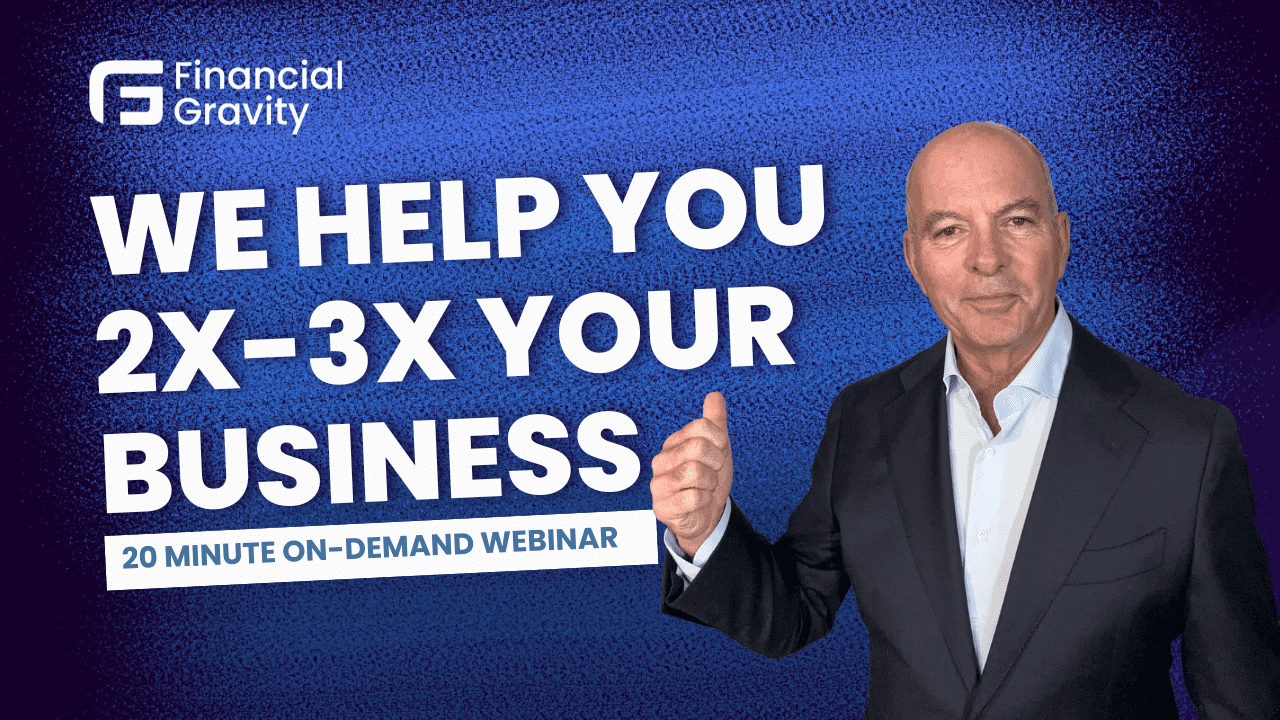No matter how big your goal is, you can’t begin to achieve it until you just take the first step. Four percent of 2025 is gone already. That’s the thing about time; it moves forward no matter what we do with it. If 2025 is going to be the year you position yourself for greatness, it’s time you took that first step.
Define the Growth Challenge for Financial Advisors
Doubling or tripling your revenues (and thereby your income) is a huge challenge for almost all advisors, as evidenced by the anemic AUM growth forecasts for the industry. We presume that if you knew how to achieve top-of-industry growth, you’d be busy doing it. Ironically, the scope of the problem is so complex that most advisors simply don’t know where to start and end up making no changes at all.
Albert Einstein said, “If I were given one hour to save the planet, I would spend 59 minutes defining the problem and one minute resolving it.” 2025 will come and go no matter what you do, so maybe the best thing you could do now, this week, is to get started defining your problem. For our purposes here, let’s define your problem as your weaknesses.
Everyone ever born, or whoever will be born, has weaknesses as well as strengths. Maybe you’re a great closer, fantastic at winning business, but you find the daily grind of client review meetings dull and unfulfilling. Or maybe you love to write marketing blogs and white papers, but don’t enjoy having to persuade prospects to fire their current advisor.
Those are just two examples of one element of the advisor’s life. The top-earning advisors have one thing in common: they spend most of their time in strategic client and business development. How many hours last week, last month, or last year did you spend developing new and existing client relationships? For the great majority of advisors out there, that number was near or below 30% of their working time.
Solve the Productivity Problem
Productivity is the number one weakness in our industry. New advisors are in a full-time scramble to find new opportunities and close them. Advisors in mid-career struggle with finding time for prospecting and cross-selling because the middle office demands of the business are so great. Advisors near retirement often do no prospecting at all.
Productivity is also directly related to income. Advisors who can find a way to spend 60% of their time working with new prospects and existing clients earn, on average, over eight times the income of advisors who spend 30% of their time in those activities. If you desire that kind of income, you’ll need to figure out how to delegate or automate those productivity-killing chores.
Finding the Sweet Spot
There is a bookending phenomenon in the advisory world. Advisors in small shops and advisors in large firms both face productivity challenges. In a one- to four-person outfit, the advisor has to do almost everything: HR, trading, withdrawal requests, routine client servicing, compliance, and marketing.
Financial advisors in large shops spend considerable time in meetings, on Zoom calls, getting product updates, filling in time sheets and CRM entries, and reading reports. And large firms typically lack the nimbleness and creativity necessary to win many deals. Large firm marketing rarely presents new opportunities for individual advisors. These are just a few of the reasons so many advisors go independent.
There is nothing so valuable for a financial advisor as a delegation mindset. In an ideal world, advisors would only engage in client-facing activities, leaving literally everything else to staff, outsourced services, and technology. This includes marketing, both to find new prospects and to nurture existing clients. That kind of marketing is impossible for small and large firms.
Building the infrastructure of the middle office, technology, and marketing can be impossibly expensive, so for most advisors, working with an RIA platform is the best solution. Many advisors make the mistake of starting with payout percentages when they should be making productivity support criterion number one. If you’re searching for a new partner, consider these two critical qualifying questions first:
Do they offer marketing support to generate new opportunities for you? Marketing support is more than advertising. It includes all elements of branding: your value proposition, scope of services, website, and digital and content campaigns. Ideally, Your new partner would offer agency-level marketing support to keep you top of mind, find new prospects, and nurture deals in the funnel. Anything expensive and time-consuming should be outsourced, but the quality of the work has to match the ideal customers you’re targeting. A lot of marketing out there—an overwhelming majority of it—does zero to support an advisor’s brand.
Do they have a customer services team to handle all routine client support activities? You don’t need to calculate RMDs or make withdrawal decisions. This and marketing both require a powerful CRM solution, so you’ll want a thorough demo to prove that they can deliver a great client experience, including onboarding.
What would it mean to your productivity if you fully delegated marketing and tactical client servicing? For one thing, it would likely mean an entirely new and higher level of job satisfaction, and for another, a big jump in your income. A higher payout on the same income is marginally okay, but a doubling of your revenue is a quantum leap.
Financial advisors have challenging jobs, and independent advisors have to juggle managing their firm and the clientele. That delegation mindset can fully flourish with the right platform partner who can handle all those mundane and un-compensated tasks that kill their productivity.




















